Kurama - Kibune hiking trail
| Travel Reports by Chashitsu | view profile of Chashitsu |
| previous post |
| next post |
| Note: The opinions and views expressed in this user report are those of the individual author and do not necessarily reflect the opinions and views of japan-guide.com. |
December 29, 2014 - Kurama - Kibune hiking trail
The TIC in Kyoto suggests a number of walks around the city, one of which is a hike between the mountain villages of Kurama and Kibune in the foothills of Mount Kurama to the north of Kyoto. Kurama is situated near at end of the Eizan electric railway with the trail climbing up from the station through the Yuki Jinja shrine to the Kuramadera temple halfway up the trail, before crossing the pass and descending to Kibune. Please note that the trail over the pass is closed during the winter months.
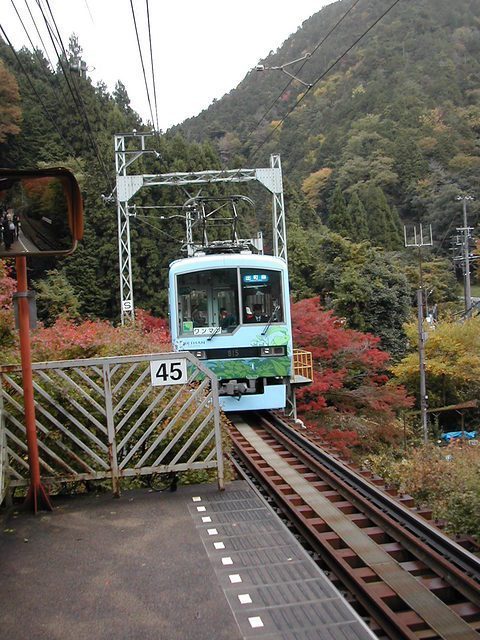
Kurama village has one of the best onsen in Kyoto although it was not on my agenda. Along the trail from Kurama station is the Yuki jinja shrine, which is famous for it's fire festival in October each year. The trail passes up steps through the shrine under both a torii arch and a natural one provided by two giant cedar trees wrapped in a shimenwara rope. The shrine has an effigy to the fire devil.
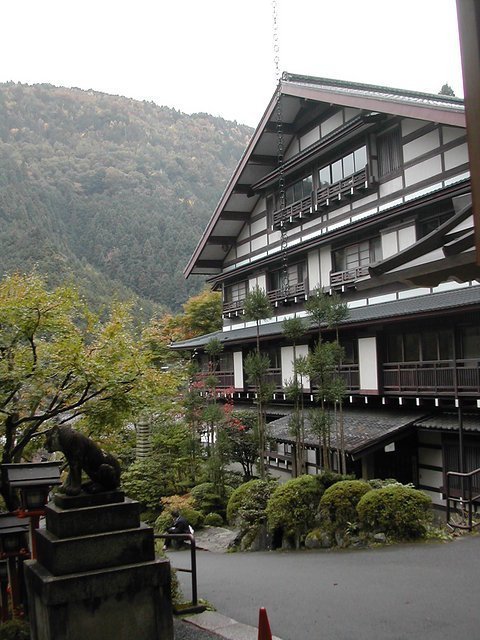
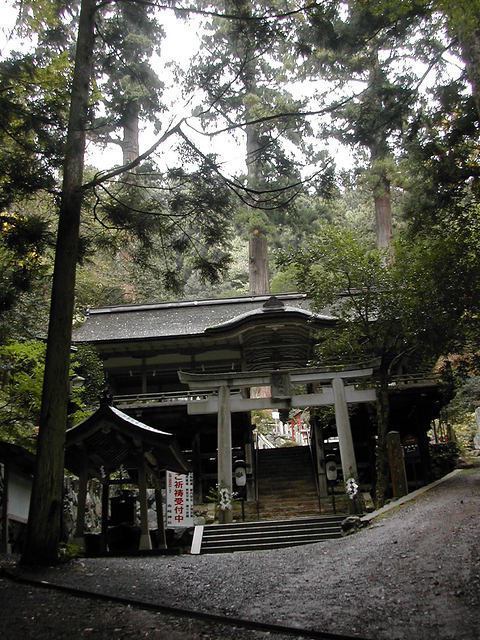
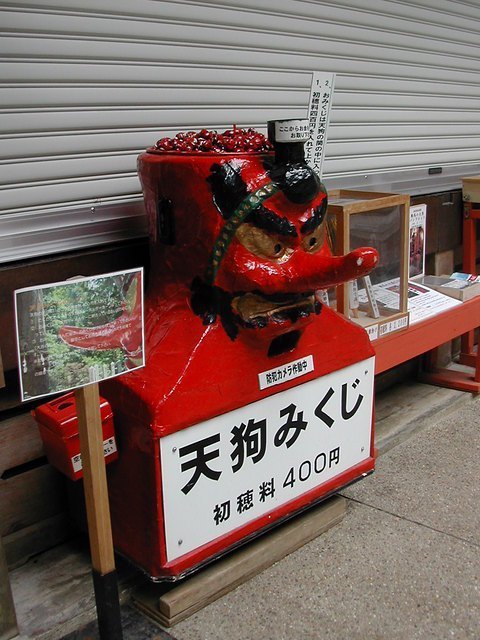
The trail is largely stepped and continues on to the Kuramadera temple complex with it's spectacular views. Despite the profusion of vermilion, it is a Buddhist temple complete with traditional guardian cat like animals. As we were at altitude the koyo was already fading (mid November). However the small garden complete with Mount Fuji mound was quite charming with some autumn flowering camellias. A smaller shrine building of more recent renovation stands above the vermilion shrine in more traditional Buddhist colours of natural wood and gold trimmings. The trail continues over the mountain pass and descends into Kibune village.
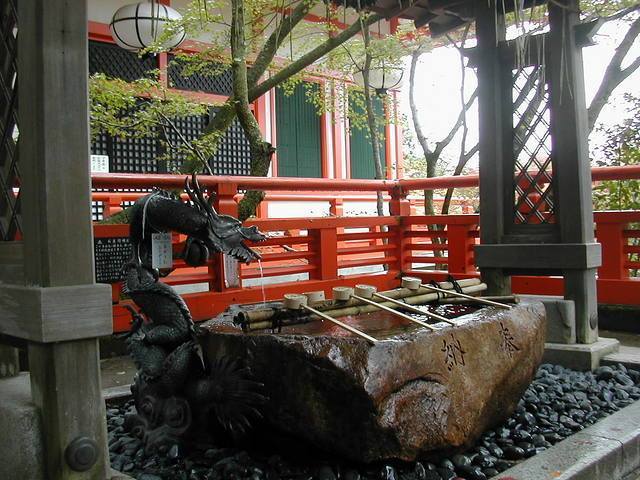
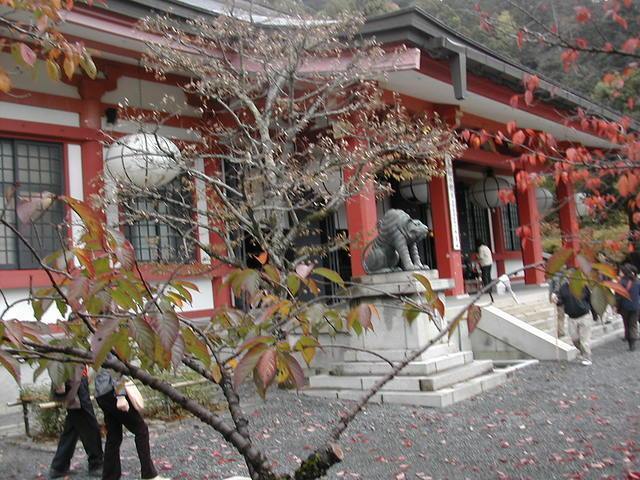
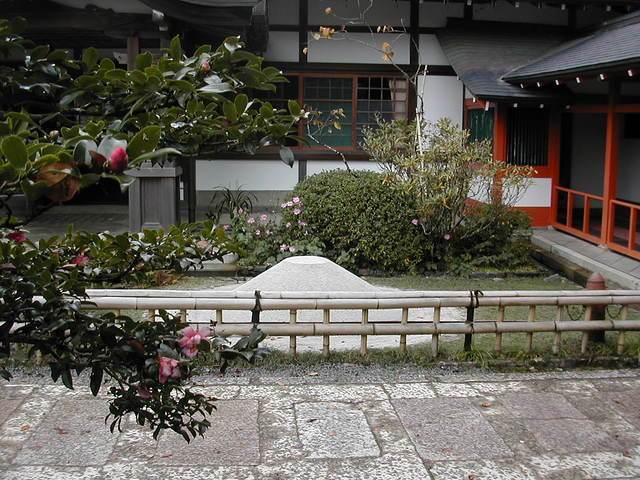
Kibune village comprises a few ryokans offering Kawadoko kaiseki dining on platforms over the small river. According to legend a goddess travelled in a yellow boat (hence the name Kibune) from Osaka all the way up the river into the mountains north of Kyoto, and Kibune Shrine was built at the site where her boat journey had come to an end. The main Kibune shrine is dedicated to the god of water and rain and for those in peril on the high seas. Although the shrine is small, it is richly decorated and has been recently renovated. Behind the shrine is a Shigemori Mirei garden illustrating the early Ise style of sacred clearings in the forest. Okunomiya, the inner sanctum and original site of the Kibune Shrine, lies a further up the valley. It has a large rock, known as the boat stone, which is said to be where the goddess' yellow boat is buried.
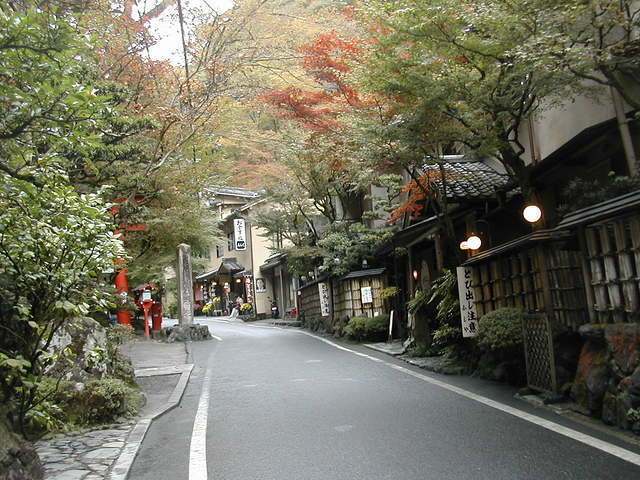
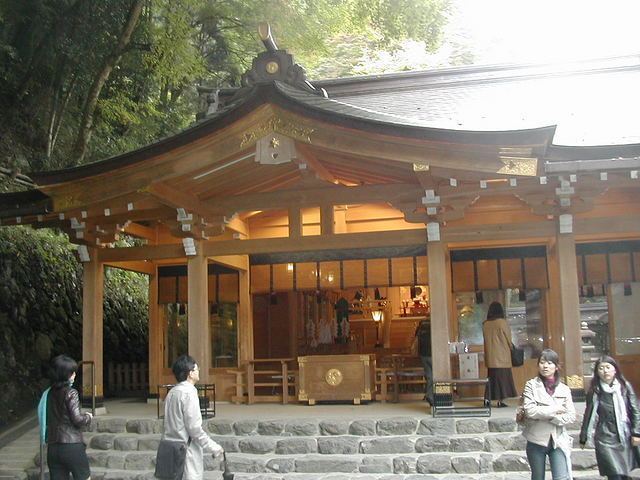
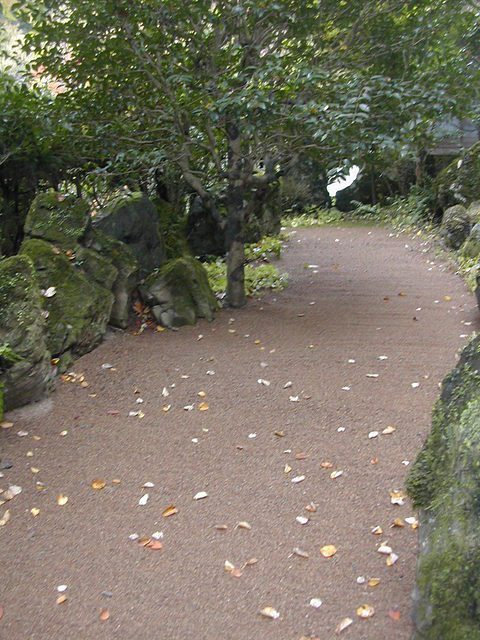
| previous post |
| next post |
|
List of Posts:
2017/07/25 - Japan's tectonic landscape reflected in the gardens 2017/07/15 - Flora of Japan 2016/04/27 - Time in Asakusa 2016/04/25 - Kakunodate 2016/04/23 - A Thousand Cranes 2016/04/22 - Castle in the Clouds 2016/04/21 - The beauty of Koraku-en 2016/04/20 - Far from the Madding Kyoto Crowds - Part 1 2016/04/20 - Far from the Madding Kyoto Crowds - Part 2 2016/04/18 - A Day in the Mountains 2016/04/17 - Delights of Hikone 2016/04/16 - Nara Revisited 2015/01/03 - Kamakura temples and gardens 2015/01/01 - Takayama Temple Trail 2014/12/29 - Kurama - Kibune hiking trail 2014/11/10 - A visit to Himeji 2014/11/05 - Shigemori Mirei - The Rebel in the Garden 2014/11/04 - Arashiyama and nearby sights 2014/11/03 - The less visited sites of Nara 2014/11/03 - The gems of Matsue 2014/10/31 - Agon-shu Monastery 2014/10/30 - In the footsteps of the Shogun 2014/10/30 - Tale of the Genji |